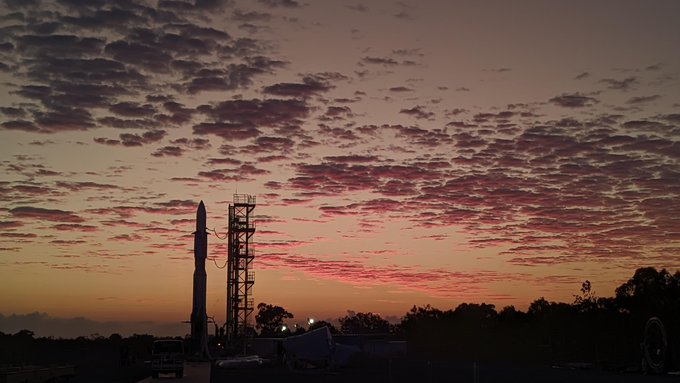Australia now has a homegrown orbital launch attempt under its belt.
The company Gilmour Space notched that milestone today (July 29), sending its first Eris rocket skyward from the Bowen Orbital Spaceport in coastal Queensland around 6:35 p.m. EDT (2235 GMT; 8:35 a.m. local Australian time).
Eris didn't get very far. The rocket began sliding sideways shortly after rising off the pad, crashing back to Earth just 14 seconds after liftoff. It looked a lot like the third orbital launch attempt by the California company Astra, which featured a similar sideways slide off the pad in August 2021.
ERIS | Test Flight 1 | Gilmour Space Technologies - YouTube

This outcome was far from unexpected; after all, it's rare for a rocket to ace its first-ever liftoff. And Gilmour Space was not banking on full success today.
"Whether we make it off the pad, reach max Q, or get all the way to space, what's important is that every second of flight will deliver valuable data that will improve our rocket's reliability and performance for future launches," the company said about the mission, which was known as Eris-1, in a February statement.
Gilmour Space sounded an optimistic note after the launch as well. "Today, Eris became the first #AustralianMade orbital rocket to launch from Australian soil — ~14s of flight, 23s engine burn. Big step for launch capability. Team safe, data in hand, eyes on TestFlight 2," the company said this evening in an X post that shared two photos of the liftoff.
TestFlight1 — Liftoff 🚀Today, Eris became the first #AustralianMade orbital rocket to launch from Australian soil — ~14s of flight, 23s engine burn.Big step for 🇦🇺 launch capability. Team safe, data in hand, eyes on TestFlight 2.(More pics and vids to come from the media.) pic.twitter.com/l9yPSUAIbRJuly 30, 2025
Today's launch was a long time time coming. Gilmour Space, which is based on Australia's Gold Coast, originally aimed to fly as early as March, but that plan was scuttled by Tropical Cyclone Alfred.
The company then targeted mid-May but was foiled by a technical issue: On May 15, Eris' payload fairing, the clamshell that protects satellites during launch, unexpectedly popped off while the rocket was sitting on the pad.
The culprit was a surprise "power surge, caused by electrical backfeed from downstream devices," Gilmour Space explained in an X post from May 30.
After fixing that issue, the company geared up for a try in late June. That didn't happen, however, thanks to strong winds near the spaceport, which Gilmour Space operates just north of the town of Bowen. The target date then continued slipping to the right due largely to unfavorable weather, until Eris was finally able to get off the ground today.
Brothers Adam and James Gilmour founded Gilmour Space in 2015, with the goal of making Australia a major player in the spaceflight field. A big part of that vision centers on Eris, an 82-foot-tall (25-meter-tall) rocket designed to launch up to 474 pounds (215 kilograms) of payload to sun-synchronous orbit.
The company, whose workforce has grown to about 200 people, also builds satellites. In fact, its ElaraSat spacecraft bus launched for the first time just last month on SpaceX's Transporter-14 rideshare mission. On that debut mission, ElaraSat carried an instrument for CSIRO, Australia's national science agency: a hyperspectral imager that will help keep tabs on water quality.
Today's launch was the first orbital attempt of any kind from Australian soil in more than 50 years. The most recent such flight came in October of 1971, when a British Black Arrow rocket successfully lofted the United Kingdom's Prospero satellite from the Woomera Rocket Range in South Australia.

.jpg) 20 hours ago
1
20 hours ago
1

 English (US)
English (US)